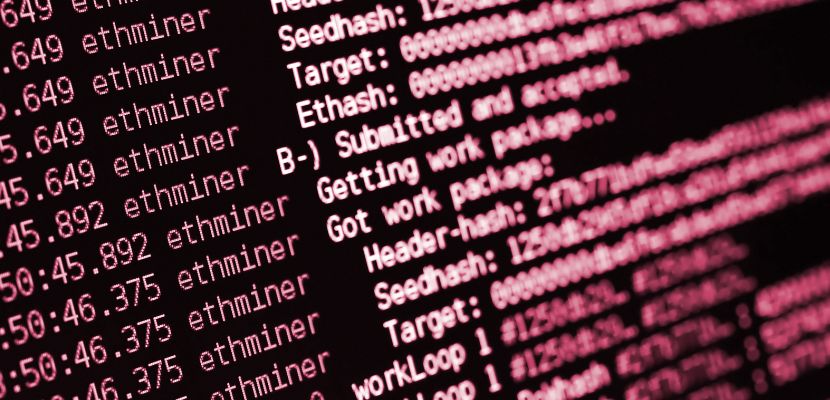A file hash is a unique alphanumeric string generated by a cryptographic hash function, such as MD5, SHA-1, or SHA-256, based on a file’s contents. It serves as a digital fingerprint, allowing users to verify file integrity, detect corruption, and ensure authenticity.

What Is a File Hash?
A file hash is a fixed-length string of characters generated by applying a cryptographic hash function to the contents of a file. This function processes the data in the file and produces a unique output, known as the hash value or digest, which serves as a digital fingerprint. The hash is designed to be highly sensitive to changes, meaning that even a single modified bit in the file results in a completely different hash value.
File hashes are widely used for integrity verification, security, and data validation. They allow users to compare the computed hash of a downloaded or transferred file with a known, trusted hash to detect any tampering or corruption. Cryptographic hash functions, such as MD5, SHA-1, and SHA-256, are designed to be computationally efficient while maintaining resistance to collisions, ensuring that no two different files produce the same hash.
File Hash Types
File hashes are generated using cryptographic hash functions, which produce fixed-length outputs unique to a file’s contents. Different hash algorithms offer varying levels of security, speed, and resistance to collisions. Below are the most commonly used file hash types.
MD5 (Message Digest Algorithm 5)
MD5 produces a 128-bit hash value represented as a 32-character hexadecimal number. It was widely used for checksums and integrity verification but is now considered insecure due to vulnerabilities that allow for hash collisions, where different inputs generate the same hash.
SHA-1 (Secure Hash Algorithm 1)
SHA-1 generates a 160-bit hash value and was once a standard for cryptographic applications. However, it has been deprecated for security purposes due to weaknesses that allow attackers to create duplicate hashes, compromising data integrity.
SHA-256 (Secure Hash Algorithm 256-bit)
SHA-256 is part of the SHA-2 family and produces a 256-bit hash value. It is significantly more secure than MD5 and SHA-1, making it widely used for digital signatures, file integrity checks, and blockchain technology.
SHA-512 (Secure Hash Algorithm 512-bit)
SHA-512 is another member of the SHA-2 family and generates a 512-bit hash value. It provides stronger security than SHA-256 but is computationally more expensive, making it suitable for applications requiring high levels of cryptographic strength.
CRC32 (Cyclic Redundancy Check 32-bit)
CRC32 is a non-cryptographic checksum algorithm that produces a 32-bit hash value. It is primarily used for error-checking in file transfers and storage rather than for security, as it is not resistant to intentional modifications.
BLAKE2
BLAKE2 is a modern cryptographic hash function that offers better performance than MD5 and SHA-256 while maintaining high security. It is designed for efficiency and is often used in digital forensics, cryptography, and password hashing.
RIPEMD-160 (RACE Integrity Primitives Evaluation Message Digest)
RIPEMD-160 generates a 160-bit hash and was developed as an alternative to SHA-1. Though more secure than SHA-1, it is less commonly used in modern cryptographic applications due to the dominance of SHA-2 and SHA-3.
SHA-3 (Secure Hash Algorithm 3)
SHA-3 is the latest member of the Secure Hash Algorithm family, designed to provide strong security and resistance to collision attacks. It differs from SHA-2 in its underlying structure and is used in applications requiring advanced cryptographic protection.
File Hash Example

A file hash is generated by applying a cryptographic hash function to a file. Below is an example of how different hash algorithms produce unique hash values for the same file.
Imagine we have a text file named example.txt containing the following text:
Hello, world!Generated Hash Values
If we apply different hash functions to this file, we get the following results:
- MD5:
fc3ff98e8c6a0d3087d515c0473f8677- SHA-1:
d3486ae9136e7856bc42212385ea797094475802- SHA-256:
c0535e4be2b79ffd93291305436bf889314e4a3faec05ecffcbb9ace6c8617ac- SHA-512:
3615f80c9d293ed7402687f94b22c51616e6d3f3ee1793e216daebcf1e9d9f5d cccf056008127ca710ff66c1a69c92ccdde6d0ab1063a0da91829f3a163ab9dcHow Does File Hashing Work?
File hashing is the process of converting a file's contents into a fixed-length alphanumeric string using a cryptographic hash function. This hash acts as a unique digital fingerprint of the file, allowing for easy verification of integrity and authenticity.
- Input processing. When a file is hashed, its entire content is read as binary data. The data is then processed by a hash function, which applies a series of mathematical transformations to generate a unique output.
- Hash function application. The hash function operates on the file’s binary data in fixed-size chunks. Depending on the algorithm used (e.g., MD5, SHA-256, SHA-512), the function applies bitwise operations, modular arithmetic, and logical functions to transform the input data into a condensed hash value.
- Fixed-length hash output. Regardless of the size of the original file, the resulting hash is always of a fixed length. For example, MD5 produces a 128-bit hash (32 hexadecimal characters), while SHA-256 generates a 256-bit hash (64 hexadecimal characters).
- Sensitivity to changes. A cryptographic hash function is designed to be highly sensitive to changes. Even modifying a single bit in the file will produce an entirely different hash. This property, known as the avalanche effect, makes hashes useful for detecting corruption or tampering.
- One-way function. Hashing is a one-way operation, meaning that it is computationally infeasible to reverse-engineer the original file from its hash. This characteristic ensures security in applications like password storage and digital signatures.
- Use in integrity verification. By comparing the computed hash of a file with a previously generated known hash, users can verify whether the file has been altered. If the hashes match, the file is intact; if they differ, the file has been modified.
What Is File Hash Used For?
File hashing is used in a variety of applications to verify integrity, enhance security, and optimize data processing. Some of the most common use cases include:
- File integrity verification. Hashing is used to check whether a file has been altered during transmission, storage, or downloading. By comparing the computed hash of a file with a known, trusted hash, users can detect corruption or unauthorized modifications.
- Data deduplication. Hash values help identify duplicate files in storage systems by generating unique fingerprints for each file. If two files have the same hash, they are considered identical, allowing systems to eliminate redundant copies and save space.
- Digital signatures and certificates. Cryptographic hashing is a fundamental component of digital signatures and certificates, ensuring the authenticity and integrity of documents, emails, and software. A signed hash confirms that the data has not been altered since it was signed.
- Password storage and authentication. Systems store hashed passwords instead of plaintext passwords for security. When a user logs in, the entered password is hashed and compared to the stored hash. Strong hashing algorithms like bcrypt, Argon2, or PBKDF2 add additional security through salting.
- Malware detection and threat analysis. Security software and antivirus programs use file hashes to identify known malware. Threat intelligence databases store hashes of malicious files, allowing systems to quickly detect and block harmful software.
- Blockchain and cryptocurrencies. Blockchain technology relies on cryptographic hashing to secure transactions and link blocks. Hashing ensures immutability and integrity within decentralized systems like Bitcoin and Ethereum.
- Forensic analysis and evidence integrity. Digital forensics relies on file hashes to verify that evidence has not been tampered with. Investigators generate hashes of digital files and compare them throughout an investigation to ensure data authenticity.
- Version control and data synchronization. Software development and cloud storage systems use file hashes to track changes, synchronize data efficiently, and prevent conflicts between different versions of the same file.
How to Generate a File Hash?
Generating a file hash involves using a cryptographic hash function to process the file’s contents and output a unique hash value. This can be done using built-in command-line tools, programming languages, or third-party utilities.
1. Using Command-Line Tools
Windows (PowerShell)
PowerShell provides the Get-FileHash command to generate a hash:
Get-FileHash example.txt -Algorithm SHA256You can replace SHA256 with MD5, SHA1, SHA384, or SHA512.
Linux and macOS (Terminal)
Most UNIX-based systems include built-in hashing utilities:
- MD5
md5sum example.txt- SHA-1
sha1sum example.txt- SHA-256
sha256sum example.txt- SHA-512
sha512sum example.txt2. Using Python
You can generate a file hash using Python’s built-in hashlib module:
import hashlib
def hash_file(file_path, algorithm="sha256"):
hasher = hashlib.new(algorithm)
with open(file_path, "rb") as f:
while chunk := f.read(4096):
hasher.update(chunk)
return hasher.hexdigest()
file_path = "example.txt"
print("SHA-256 Hash:", hash_file(file_path, "sha256"))Replace "sha256" with "md5", "sha1", or "sha512" for different hash algorithms.
3. Using Third-Party Tools
There are various GUI-based tools for generating file hashes, such as:
- HashCalc (Windows)
- HashMyFiles (Windows)
- OpenSSL (Cross-platform)
These tools provide an easy way to drag and drop files for hash computation.
Why Is a File Hash Important?
File hashing is important because it provides a reliable way to verify data integrity, ensure security, and detect unauthorized modifications. By generating a unique, fixed-length hash value for a file, hashing allows users to confirm that a file has not been altered during transmission, storage, or processing.
File hasing plays a crucial role in cybersecurity, enabling malware detection, digital signatures, password hashing, and blockchain technology. Additionally, it help optimize data management by supporting deduplication, version control, and forensic investigations. The one-way nature of cryptographic hash functions ensures that hashes cannot be reversed to reveal original file contents, making them a secure and efficient method for data verification.
Does Every File Have a Hash?
Yes, every file has a hash as long as a cryptographic hash function is applied to it. A file's hash is generated based on its contents, meaning that even an empty file has a hash value, which corresponds to the hash of an empty data input. Since hashes are unique to the exact contents of a file, even the slightest change—such as modifying a single byte—will result in a completely different hash. However, a file does not inherently "contain" a hash; it must be computed using a hashing algorithm like MD5, SHA-256, or SHA-512.